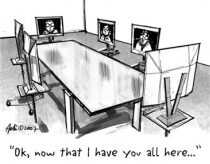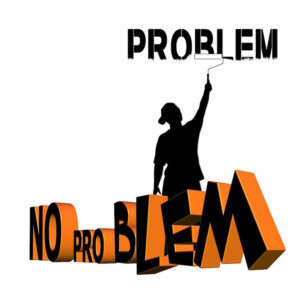Unfortunately, our 3rd session had to be cancelled -so you won’t find a review of it here. We hope this will remain a one-off, as the feedback from participants so far was very positive and encouraging to continue with this new, innovative format even if not many people can really see how it can work. As soon as they have tried, they are convinced.
It does work! And the 4th session of our VLD-Café online get-together has proven it again. The subject this time was about
What it takes to get high engagement in virtual meetings

The different perspectives brought into the discussion can be clustered into the area of managing the meeting, focusing on relationship and co-creation.
I am going to summarise a number of highlights in this review:
Managing the meeting:
There were simple but very effective tips like paying attention to who is active and who is not. Then calling on the participants who are fairly low in their activity. In order to do this you need to have a system in place to know the activity level. Old-style would be to keep tabs on who is contributing. New style depends on the platform you are using. Some of them will flag whether people are opening other windows on the PC whilst -more or less- participating in your meeting (like WebEx does with an “!” or Adobe Connect in the engagement meter).
The use of a dedicated facilitator was mentioned so that the person who owns the meeting can fully concentrate on the interaction and content and does not need to take care of technical issues et cetera.
Focus on relationship:
Very interesting was that some research shows that virtual meetings should have a balance between task orientation and relationship focus. It even puts the balance at 50/50! So, we then discussed what it means to focus on relationship. A ritual which is gaining momentum in the virtual work context is the use of a “check-in” and “check-out”. At the core of all the variations we discussed is that people are not only talking about the tasks they come with but also talk about their state of mind and the context they have been in before the meeting.
Simple questions like “how are you coming into this meeting?” or “how are you today?” allows people to speak a bit about their context and challenges outside the meeting and gives others the opportunity to show empathy and building relations. Some additions can be very powerful as one participant reported; i.e adding some guidance for focus to this personal question, like: “body & mind” or “heart & mind” or even “body & soul”.
In this context we also spent some time to reflect on the effect of people sitting at home in front of their computers or in a small office space on their own when participating in virtual meetings. We were wondering whether this “private” space gives the feeling of safety and allows some deeper connection and intimacy in the interaction to happen. Of course, as a leader of the meeting you need to set the context for this to emerge.
A variation of it all was an acronym used in the Netherlands: R.I.P., which in the Dutch language means focus balanced on relationships, content and procedures. Jokingly, it was added that if you don’t follow this rule of thumb you indeed R.I.P. in the original sense of the acronym.
Co-creation:
Another aspect of enhancing the engagement is the level of co-creation happening in a virtual meeting. How much is the meeting content-owned, shared or brought into by the participants? And how is the creation of content and outcome being handled during the meeting? Hence, asking participants upfront to co-create the agenda is one step to enhance the engagement during the meeting.
Another interesting way of using co-creation in a procedural form came from a head of IT: when you have MS Team Space™ available you could use MS One Note™ in the meeting to record the actions and ask the person who just agreed on one to write it down themselves in MS One Note™ which would then immediately be visible to all participants as it is stored on the server.
And, as you would expect in a conventional coffee corner we also went off track occasionally and discussed general aspects of the future of learning, training and interaction. Here, the aspect of gamification was interesting as the younger generations might be much more engaged in learning and training activities when they are combined with real gamification. This could potentially be another interesting subject to discuss during one of the next VLD-Café sessions. So, watch this space … or better, our event calendar.
![]() The next planned session will take place on 17th November and is all about what can be done to move appraisals from a dreaded task to a value adding exercise for everyone involved. So, sign up (to get your login-details) and join us in the discussion. Places are limited.
The next planned session will take place on 17th November and is all about what can be done to move appraisals from a dreaded task to a value adding exercise for everyone involved. So, sign up (to get your login-details) and join us in the discussion. Places are limited.



